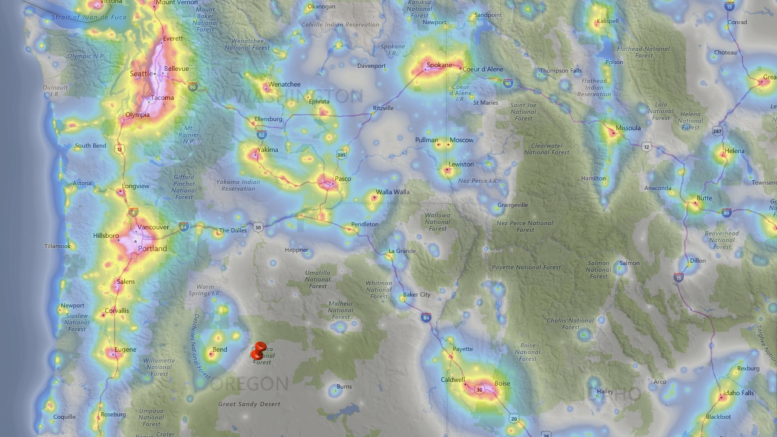In this article, we will be discussing what one needs to know to start being able to confidently talk about light pollution. The World Atlas of Artificial Night Sky Brightness found that, “80 percent of the world’s population lives under skyglow. In the United States and Europe 99 percent of the public can’t experience a natural night”
What is light pollution?
Light pollution is the “brightening of the night sky caused by street lights and other man-made sources, which has a disruptive effect on natural cycles and inhibits the observation of stars and planets.” Per darksky.org, components include:
- Glare – excessive brightness that causes visual discomfort
- Skyglow – brightening of the night sky over inhabited areas
- Light trespass – light falling where it is not intended or needed
- Clutter – bright, confusing and excessive groupings of light sources
John E Bortle created a scale in 2001 to help determine the brightness of the nights sky, which has come to be known as the Bortle Scale. The darker the level, the more better the skies.
To determine the levels of light pollution, there are several tools available:
Sky Quality Meter http://unihedron.com/projects/darksky/
Measure the quality of the light $120
What Are The Effects Of Light Pollution?
People:
Per the New York Times, certain types of lights can interfere with the internal clock of humans. Another issue that “participants exposed to higher levels of blue light had 1.5-times higher risk of developing breast cancer and 2-times higher risk of developing prostate cancer per” https://www.darksky.org/study-links-artificial-light-at-night-and-cancer-risk/
Animals
This is a big deal for animals such as turtles and migrating birds. Sea turtles live in the ocean but hatch at night on the beach. Hatchlings find the sea by detecting the bright horizon over the ocean. Artificial lights draw them away from the ocean. In Florida alone, millions of hatchlings die this way every year.
Birds that migrate or hunt at night navigate by moonlight and starlight. Artificial light can cause them to wander off course and toward the dangerous nighttime landscapes of cities. Every year millions of birds die colliding with needlessly illuminated buildings and towers. Migratory birds depend on cues from properly timed seasonal schedules. Artificial lights can cause them to migrate too early or too late and miss ideal climate conditions for nesting, foraging and other behaviors.
https://www.darksky.org/light-pollution/wildlife/
Economic
The cost of excess light has been estimated to 33% of all lighting in the US. This is because when lights face up, the energy is lost because the light just faces the sky.
What Can Be Done?
Helping change local laws, regulations, and start campaigns to inform and change how lighting is utilized in your local area. Knowledge is power and there are aspects of decreasing light pollution that everyone can get behind to support the issue.
Dark Sky Sites In The Pacific Northwest
Idaho
Central Idaho Dark Sky Reserve
Great Videos
Resources
New York Times Article: https://www.nytimes.com/interactive/2016/04/07/science/light-pollution-effects-environment.html
Interactive Map https://www.lightpollutionmap.info
Groups that one could join include:
International Dark Association: https://www.darksky.org
How To Start A Local Dark Skies Group: https://www.darksky.org/how-to-start-a-local-dark-skies-group/

Leave a comment